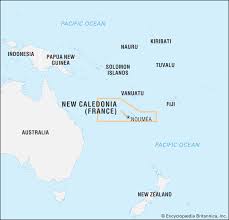New Caledonia:

A high-stakes attempt by the French Overseas Minister to broker a new political accord for New Caledonia collapsed recently, plunging the French Pacific territory into profound uncertainty.
- It is a French overseas territory located in the southwestern Pacific Ocean, approximately 1,500 km east of Australia.
- It comprises the main island of Grande Terre (where the capital, Nouméa, is situated), the four Loyalty Islands (Ouvéa, Lifou, Tiga, and Maré), the Belep archipelago, the Isle of Pines, and some remote islands.
- Just over 270,000 people live in New Caledonia (2019 census).
- Approximately 39 percent are indigenous (‘Kanak’). The remainder are Caledonians of European, Polynesian and other (including Vietnamese, Indonesian and Algerian) origins.
- It is one of the European Union’s Overseas Countries and Territories (OCTs), but is not part of the European Union, the Euro or Schengen zones.
- New Caledonia, originally inhabited by the Kanaks, came under French control in 1853.
- New Caledonia for France is situated in the South Pacific, New Caledonia provides France with a military and geopolitical presence in a region with growing global interest, particularly with increasing influence from China.
- The island is rich in natural resources, notably nickel, which is vital for various industries, including manufacturing and technology. It holds about 25% of the world’s nickel reserves.
- New Caledonia’s lagoons, with their diverse reefs and associated ecosystems, were designated a UNESCO World Heritage site in 2008.




